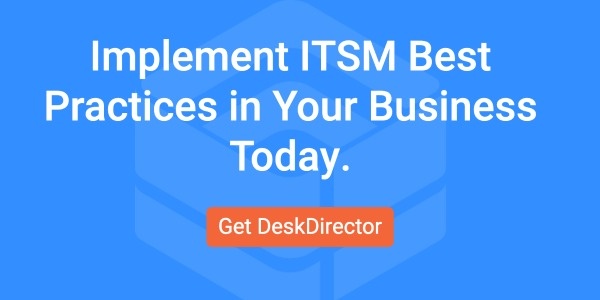Imagine a critical service outage at a financial firm—every minute of downtime means missed transactions, frustrated customers, and lost revenue. Or think about an unresolved IT issue at a healthcare provider, where service delays can disrupt patient care and erode trust. These scenarios highlight just how high the stakes can be when IT teams fail to deliver on time.
At the heart of these expectations are Service Level Agreements (SLAs). More than just metrics, SLAs are promises or commitments to provide timely and effective IT support that businesses and customers rely on. When SLAs are not fulfilled, the consequences ripple far beyond a single ticket, threatening operational efficiency, reputations, and relationships.
In this blog, we'll uncover how IT teams can rise to the challenge of meeting these commitments. By adopting smarter tools like automation and centralized communication, teams can streamline workflows, enhance collaboration, and not only meet SLA targets but consistently exceed them.
.webp?width=800&height=800&name=IT%20Teams%20(1).webp)
Understanding the SLA Challenge
Service Level Agreements (SLAs) are the foundation of trust between IT teams and their stakeholders. They define expectations, establish accountability, and ensure IT services align with business goals.
But SLAs are more than just metrics on a report—they reflect your team's ability to deliver what customers need when they need it. SLAs often encompass metrics like response times, resolution times, and uptime guarantees.
Despite their importance, many IT teams struggle to meet SLA commitments. Here are a few reasons why:
- Manual Processes: Manually triaging tickets or tracking deadlines is time-consuming and prone to errors.
- Fragmented Communication: Teams working across multiple tools and platforms risk losing critical context, which delays resolutions.
- Limited Visibility: Without real-time SLA tracking, issues can snowball before anyone notices.
These challenges make SLA compliance feel like a game of whack-a-mole, leaving IT teams scrambling to put out fires instead of delivering proactive service. The good news? Automation and centralized communication offer a way out.
Leveraging Automation to Meet and Exceed SLAs
Automation is no longer a luxury—it's a necessity for IT teams aiming to excel. Automation empowers IT teams to focus on higher-value activities by eliminating repetitive tasks and enabling proactive workflows.
Here are some practical ways automation helps IT teams exceed SLA targets:
- Automated Ticket Triage: Instead of manually sorting and prioritizing tickets, automation tools can assign tickets based on SLA deadlines, urgency, and team availability. This ensures that high-priority issues are addressed first.
- Proactive Escalations: Automation can trigger alerts and escalate tickets if SLAs are at risk of being breached, giving teams ample time to respond.
- Workflow Automation: Routine processes like password resets or software installations can be fully automated, reducing ticket queues and freeing up resources for more complex tasks.
Automation also brings transparency to SLA management. With real-time dashboards and automated reporting, IT teams gain actionable insights into their performance, helping them stay one step ahead of SLA commitments.
Centralized Communication as a Game-Changer
Even the best automation tools can't solve the problems caused by poor communication. When team members and stakeholders operate in silos, vital information gets lost, leading to delays and misunderstandings. That's where centralized communication comes in.
A unified communication platform enables IT teams to:
- Collaborate Seamlessly: Real-time chat, ticket updates, and shared documentation ensure everyone is on the same page.
- Keep Stakeholders Informed: A centralized portal provides clients with up-to-date ticket statuses and SLA performance metrics, reducing unnecessary back-and-forth emails.
- Resolve Issues Faster: With all communication in one place, teams can quickly access context, ask questions, and escalate problems without switching tools.
By breaking down silos, centralized communication not only improves efficiency but also fosters trust and transparency—two key ingredients for exceeding SLA expectations.
Integrating Smarter Tools for a Holistic Approach
To fully unlock the potential of automation and centralized communication, IT teams need the right tools. Modern ITSM platforms bring these capabilities together in a single solution, making SLA management easier and more effective.
Here are some features to look for in smarter tools:
- SLA Tracking Dashboards: Real-time visibility into SLA performance helps teams stay proactive.
- AI-Powered Insights: Tools that analyze trends and predict SLA risks enable teams to act before issues escalate.
- Role-Based Access: Secure, tailored access ensures team members and stakeholders see only the information they need.
Case studies abound of IT teams transforming their SLA performance with smarter tools. For example, a managed service provider (MSP) might use automation to prioritize tickets and centralized communication to update clients in real-time. The result? Faster resolution times, happier customers, and a reputation for exceeding expectations.
Improving SLAs for IT Teams: The Conclusion
Service Level Agreements are a benchmark of IT service excellence but meeting them doesn't have to feel like an uphill battle. Adopting automation and centralized communication allows IT teams to streamline workflows, foster collaboration, and consistently exceed SLA targets.
Ready to transform your SLA game? Explore how DeskDirector can empower your IT team with smarter tools to deliver exceptional results. Book a demo today.
Author's Bio
 Warwick Eade
Warwick Eade
Warwick Eade is the founder of DeskDirector and Lancom Technology, two pioneering companies that have redefined the landscape of IT automation and ticketing systems. As a distinguished member of the Institute of Information Technology Professionals, the IEEE Computer Society, and the NZ Software Association, Warwick brings many decades of transformative leadership and innovation to the technology sector.
Warwick’s groundbreaking journey began with a simple, yet powerful idea sketched on a whiteboard at Lancom, where he envisioned more streamlined and efficient IT systems. This vision materialized into DeskDirector, a revolutionary all-in-one ticketing automation platform that enhances organizational workflows, process management, and client relationships, benefiting everyone from IT to HR.









